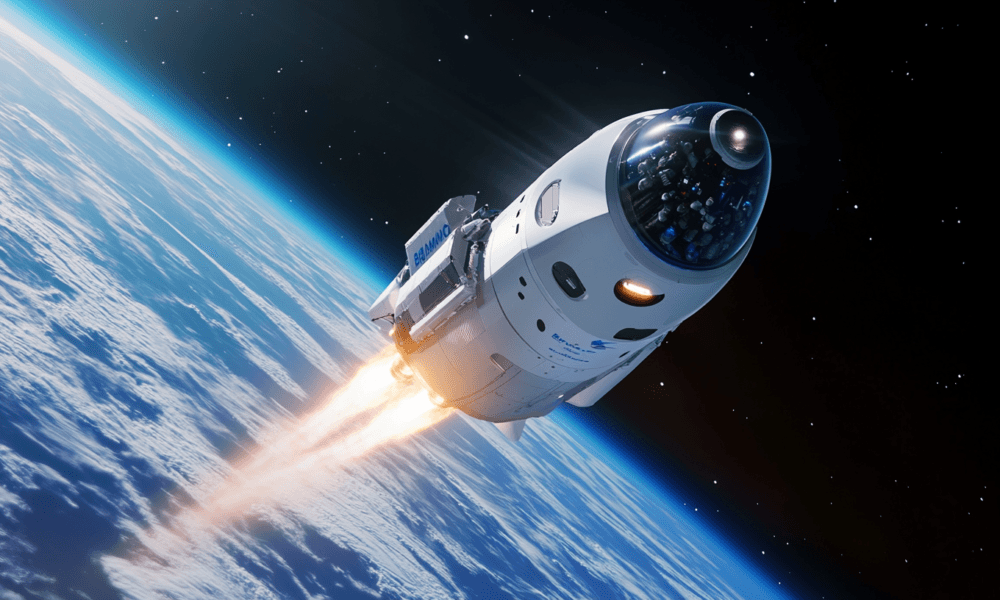The Future of Space Tourism: Are We Ready for Civilian Space Travel?
The idea of space tourism has long been the stuff of science fiction, but recent advancements have brought us closer to a reality where civilians can journey beyond Earth’s atmosphere. Companies like SpaceX, Blue Origin, and Virgin Galactic are pioneering the way, making space travel more accessible to the public. With successful test flights and missions already completed, we are on the brink of a new era of exploration—one that opens the door for everyday people to experience the wonders of space. But are we truly ready for civilian space travel? In this detailed article, we’ll explore the current advancements in space tourism, the challenges that lie ahead, and what the future might hold for this exciting frontier.
The Emergence of Space Tourism
1. A Brief History of Space Tourism
Space tourism is not an entirely new concept. The first space tourist, Dennis Tito, journeyed to the International Space Station (ISS) in 2001 aboard a Russian Soyuz spacecraft. Since then, a few other wealthy individuals have had the opportunity to experience space travel, but these trips have been exclusive, extremely expensive, and limited to a select few.
- Early Beginnings: The idea of civilians traveling to space dates back to the 1960s, with the rise of the space race. However, it wasn’t until the 2000s that private companies began to seriously consider space tourism as a viable business.
- Commercial Partnerships: Russia was the first to collaborate with private entities to send tourists to space, while NASA also began fostering partnerships with private companies, paving the way for civilian space travel.
Current Advancements in Space Tourism
1. SpaceX: Making Space Travel More Accessible
SpaceX, led by Elon Musk, has been one of the leading companies in making space tourism a reality. With the development of the Crew Dragon spacecraft and the successful launch of the Inspiration4 mission in 2021, SpaceX has demonstrated its capability to send civilians into space.
- Inspiration4 Mission: The Inspiration4 mission was the first all-civilian mission to orbit the Earth. The four crew members, who were not professional astronauts, spent three days orbiting Earth, marking a significant milestone in the democratization of space travel.
- Starship Development: SpaceX is also working on the Starship spacecraft, which is designed for deep space missions, including trips to the Moon and Mars. The Starship is intended to carry both astronauts and civilians, making space exploration accessible to a broader audience in the future.
2. Blue Origin: Taking Tourists to the Edge of Space
Blue Origin, founded by Jeff Bezos, is another major player in the space tourism industry. The company has successfully conducted several suborbital flights, taking civilians to the edge of space aboard the New Shepard spacecraft.
- New Shepard Flights: Blue Origin’s New Shepard rocket is designed to take passengers to the Kármán line, the boundary of space, providing a few minutes of weightlessness before returning to Earth. In July 2021, Jeff Bezos himself was among the first passengers to experience the trip, alongside other civilians.
- Accessibility: Blue Origin aims to make space tourism accessible to a wide range of individuals, with tickets already being sold for upcoming flights. The New Shepard flights provide a relatively short, yet thrilling experience of space.
3. Virgin Galactic: The Space Plane Experience
Virgin Galactic, led by Richard Branson, has taken a different approach to space tourism by developing a space plane known as VSS Unity. This suborbital spaceflight experience offers a brief glimpse of space and a period of weightlessness.
- Suborbital Flights: Virgin Galactic’s space plane takes off from a runway, carried by a mothership. After reaching a high altitude, VSS Unity detaches and ascends to the edge of space, giving passengers a view of Earth from above and a few minutes of weightlessness.
- Spaceport America: Virgin Galactic operates out of Spaceport America in New Mexico, which is the world’s first purpose-built commercial spaceport. The company aims to make space travel accessible to many, with the goal of providing regular commercial spaceflights.
Challenges of Civilian Space Travel
1. High Costs and Accessibility
Despite recent advancements, the cost of space tourism remains a significant barrier. Tickets for suborbital flights with companies like Blue Origin and Virgin Galactic range from $200,000 to $500,000, making the experience out of reach for most people.
- Exclusive Experience: Currently, space tourism is only accessible to the wealthy elite. For space travel to truly be democratized, costs will need to decrease significantly.
- Reducing Costs: Companies like SpaceX are working on technologies to reduce the cost of space travel, such as reusable rockets, which could eventually make space tourism more affordable to the general public.
2. Safety Concerns
Safety is another major challenge when it comes to civilian space travel. Space travel inherently carries risks, and ensuring the safety of passengers is of the utmost importance for all space tourism companies.
- Testing and Reliability: Companies like SpaceX, Blue Origin, and Virgin Galactic have conducted extensive testing to ensure the reliability and safety of their spacecraft. However, the risks associated with space travel cannot be entirely eliminated.
- Training for Civilians: Civilians who embark on spaceflights undergo training to prepare them for the journey. This includes familiarizing them with the spacecraft, learning safety protocols, and experiencing simulated microgravity.
3. Environmental Impact
The environmental impact of space tourism is also a concern. The launch of rockets produces significant carbon emissions, and the growing frequency of spaceflights could have implications for the environment.
- Carbon Footprint: Rocket launches release greenhouse gases and other pollutants into the atmosphere. With more companies planning frequent spaceflights, the environmental impact could become substantial.
- Sustainable Solutions: Some companies are exploring more sustainable fuel options and technologies to reduce the environmental impact of space travel. However, these solutions are still in the early stages of development.
The Future of Space Tourism
1. Making Space Accessible to the Masses
The ultimate goal of space tourism is to make space accessible to the general public. While the current cost of space travel is prohibitive, advancements in technology and increased competition in the industry are expected to drive down costs over time.
- Reusable Rockets: The development of reusable rocket technology by SpaceX and other companies is a key factor in reducing the cost of space travel. Reusable rockets can be launched multiple times, significantly lowering the overall cost of each mission.
- Increased Competition: As more companies enter the space tourism market, competition will likely drive innovation and cost reductions, making space travel more affordable for a broader audience.
2. Extended Space Experiences
In the future, space tourism may go beyond suborbital flights and short trips to the edge of space. Extended space experiences, such as staying in space hotels or visiting the Moon, could become a reality.
- Space Hotels: Companies like Orbital Assembly Corporation are working on developing space hotels, which would allow tourists to stay in orbit for an extended period. These hotels would provide a unique experience of living in space, complete with accommodations and recreational activities.
- Lunar Tourism: SpaceX’s Starship is being designed with the goal of taking civilians to the Moon. Lunar tourism could become a major attraction in the future, allowing people to walk on the lunar surface and experience the wonders of another celestial body.
3. Space Tourism and Scientific Research
Space tourism also has the potential to contribute to scientific research. Civilians traveling to space could participate in experiments, help gather data, and contribute to our understanding of space and its effects on the human body.
- Citizen Science: Space tourists could be involved in citizen science projects, helping researchers collect data on topics such as microgravity, radiation exposure, and the physiological effects of space travel.
- Educational Opportunities: Space tourism could also provide unique educational opportunities, inspiring future generations to pursue careers in space exploration, science, and technology.
Conclusion
The future of space tourism is incredibly promising, with companies like SpaceX, Blue Origin, and Virgin Galactic leading the way in making space travel accessible to civilians. While there are still significant challenges to overcome—such as high costs, safety concerns, and environmental impact—the advancements being made today are paving the way for a future where space tourism is a reality for many. From suborbital flights to extended stays in space hotels, the possibilities are vast, and the excitement is palpable. As we move forward, it will be crucial to balance innovation with safety, affordability, and sustainability to ensure that space tourism benefits all of humanity.




No Comment! Be the first one.